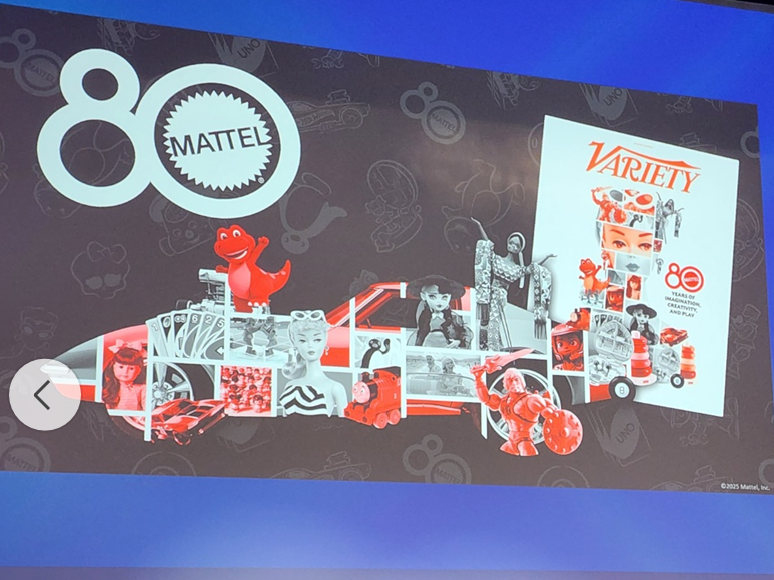아마존 프라임 비디오, AI 기술로 스트리밍 혁신... 그러나 소비자들은 여전히 신중
美 소비자 52%는 생성 AI 사용 경험 있지만, 콘텐츠 제작 활용엔 부정적... 한국 스트리밍 전략 재고 필요
아마존이 자사의 스트리밍 서비스인 프라임 비디오 전반에 생성형 인공지능(AI) 기술을 적극적으로 도입하며, 사용자 맞춤 추천, 음성 기반 자막 품질 개선, 콘텐츠 자동 요약 등 시청자 경험 향상에 박차를 가하고 있다. 그러나 최근 미국 소비자를 대상으로 실시된 조사 결과에 따르면, AI 기술이 시청 편의성 향상에는 긍정적 평가를 받고 있는 반면, 드라마·영화 등의 콘텐츠 제작 과정에 AI가 개입하는 것에 대해서는 뚜렷한 거부감을 나타낸 것으로 드러났다.
한편 법원 판결에서 AI 훈련 목적의 저작물 사용이 '공정이용'에 해당한다는 결정이 나오고 있다. 이러한 소비자의 상반된 반응은 웨이브, 쿠팡플레이 등 한국 스트리밍 업계에도 기술 활용 범위를 신중하게 결정해야 한다는 전략적 시사점을 던진다.
특히 글로벌 시장에서 K-콘텐츠의 경쟁력이 ‘인간 창작자의 감성’과 ‘문화적 고유성’에 기반하고 있다는 점을 고려할 때, AI 기술의 도입은 시청자 경험 혁신과 창작자 중심의 콘텐츠 생태계 사이에서 균형을 찾는 중요한 과제로 부상하고 있다.
Amazon Prime Video Embraces AI Innovation, But Consumers Remain Cautious About AI-Generated Content
52% of US Consumers Have Used Generative AI, Yet Show Resistance to AI-Created Entertainment Content as Legal Victories Signal Industry Shift
Amazon is aggressively deploying generative artificial intelligence across its Prime Video platform, implementing AI-powered features ranging from personalized content recommendations and real-time sports predictions to automated content quality enhancement and contextual advertising. However, recent consumer research reveals a striking paradox: while Americans increasingly embrace AI tools for personal use, they express significant reservations about AI's role in entertainment content creation.
This consumer ambivalence comes as the AI industry scores major legal victories, with recent "fair use" rulings providing crucial precedent for AI training on copyrighted materials. The developments carry significant implications for global streaming platforms, particularly in markets like South Korea where cultural authenticity and creative originality drive competitive advantage in the international content landscape.
연이은 AI 공정이용 판결, 업계에 청신호
디즈니와 NBCUniversal이 AI 이미지·영상 생성 업체 미드저니(Midjourney)를 상대로 법적 조치를 취한 지 일주일 만에, AI 업계에는 두 건의 중요한 '공정이용' 승소 판결이 나왔다.
아마존의 자회사 앤트로픽(Anthropic)은 샌프란시스코 지방법원에서 작가들의 저작물을 AI 모델 클로드(Claude) 훈련에 사용한 것이 공정이용에 해당한다는 판결을 받았다. 법원은 AI 훈련을 "작가가 수많은 책을 읽고 자신만의 독창적인 작품을 창작하는 것"에 비유했다. 다만 AI 모델 훈련을 위해 대가 지불 없이 저작물을 다운로드한 행위에 대해서는 여전히 손해배상 책임이 남을 수 있다고 명시했다.
같은 법원에서는 메타(Meta)도 여러 작가들이 메타의 대형언어모델 라마(Llama) 훈련을 문제 삼은 소송에서 비슷한 결과를 얻었다. 판사는 저작권자 허가 없이 저작물을 사용하는 것은 여전히 불법이지만, 작가들이 메타의 AI가 자신들의 작품 시장을 희석시킬 것이라는 충분한 증거를 제시하지 못했다고 판단했다.
두 판결 모두 최소한 샌프란시스코 법원에서는 생성 AI가 진정으로 새로운 작품을 창조한다는 확신이 커지고 있음을 시사한다. 디즈니와 NBCUniversal이 미드저니의 텍스트-이미지 모델이 다스 베이더 같은 스튜디오 라이선스 캐릭터를 재현할 수 있다며 저작권 침해를 주장한 소송도 비슷한 방향으로 진행될 가능성이 높아졌다.
AI Legal Wins Provide Industry Momentum
Just one week after Disney and NBCUniversal launched legal action against AI image and video company Midjourney, the AI industry secured two pivotal "fair use" victories in San Francisco federal court.
Amazon's subsidiary Anthropic won a crucial ruling that its use of authors' written works to train its Claude AI model constitutes fair use. The judge compared AI training to "an author reading numerous books and then creating their own original work." While the downloading of copyrighted works without payment for AI training purposes could still result in damages, the core training methodology received judicial endorsement.
In a parallel case, Meta achieved a similar victory regarding complaints from several authors about training its Llama large language model. While the judge maintained that using copyrighted works without permission remains unlawful, the court found that authors failed to present sufficient evidence that Meta's AI would dilute the market for their works.
Both rulings suggest growing judicial confidence that generative AI creates genuinely new works, at least in San Francisco courts. This legal momentum could benefit Disney and NBCUniversal's ongoing case against Midjourney, where they claim the text-to-image model can recreate licensed studio characters like Darth Vader.
아마존의 전방위 AI 도입
아마존은 지난 6월 25일(현지시간) 컬버시티 스튜디오 본사에서 열린 '프라임 인게이지' 컨퍼런스(Prime Video Engage Summit in Los Angeles)에서 월 2억 명 이상의 활성 사용자를 위한 맞춤형 인터페이스 구축에 AI 기술을 어떻게 활용하고 있는지 공개했다. 영화와 TV 산업에서 AI 사용에 대한 논란이 지속되는 가운데, 아마존은 시청 경험의 품질과 특화성을 높이기 위해 이 기술을 전면 도입하고 있다.
트리시아 리(Tricia Lee) 프라임 비디오 제품 및 데이터 디렉터는 주로 광고주들을 대상으로 한 이번 행사에서 "생성 AI 기술 역량이 그 어느 때보다 빠르게 발전하고 있어, 고객의 전반적인 경험 개선을 위해 모든 차원에서 혁신에 집중하고 있다"고 밝혔다. 리 디렉터는 아마존이 AI를 활용하는 영역은 맞춤화 도구, 운영 역량, 데이터 인사이트 등 다방면에 걸쳐 있다고 설명했다.
Amazon's Comprehensive AI Integration
Amazon unveiled its extensive AI implementation during the Prime Video Engage Summit in Los Angeles on June 25, showcasing how AI technology enhances the viewing experience for over 200 million monthly active users. Despite ongoing controversy surrounding AI use in film and television, Amazon is fully embracing the technology to improve content quality and personalization.
"Generative AI capabilities are evolving faster than ever, so we're leaning heavily into innovation across every dimension, bringing features to life quickly and at scale to improve customers' overall experience," said Tricia Lee, Director of Product and Data at Prime Video, addressing an audience primarily composed of advertisers.
Lee explained that Amazon leverages AI across multiple areas including customization tools, operational capabilities, and data insights.

스마트홈 보안 영역까지 확산
AI 기술의 영향력은 스트리밍을 넘어 스마트홈 보안 영역으로도 빠르게 확산되고 있다. 아마존의 자회사 링(Ring)은 6월 25일 생성 AI 기반의 '비디오 설명(Video Descriptions)' 기능을 발표했다. 이 기능은 링의 초인종과 카메라가 감지한 움직임을 실시간으로 분석해 "검은 개와 함께 계단을 올라오는 사람" 또는 "진입로에 있는 흰색 차량을 들여다보는 두 명의 사람" 같은 구체적인 텍스트 설명을 제공한다.
특히 주목할 점은 이 AI가 일상적인 활동과 긴급한 상황을 구분해 알려준다는 것이다. 예를 들어 가족이나 배달원의 일상적인 방문과 의심스러운 침입 시도를 다르게 분류해 사용자에게 알림의 우선순위를 제공한다. 링의 창립자 제이미 시미노프(Jamie Siminoff)는 "AI를 기반으로 링을 처음부터 다시 구축한다면 어떨까를 고민하게 되었다"며 "AI가 집 보안 업무의 더 많은 부분을 담당하도록 하는 것이 목표"라고 밝혔다.
이 기능은 현재 미국과 캐나다의 링 홈 프리미엄 구독자들에게 베타 버전으로 제공되고 있으며, 기존과 신규 링 도어벨 및 카메라 모델에서 모두 사용할 수 있다. 향후에는 집 전체의 여러 움직임 활동을 하나의 알림으로 통합하는 기능과 각 가정의 일상 패턴을 학습해 이상 징후만 알려주는 맞춤형 이상 징후 알림 기능도 추가될 예정이다.
사용자 체감형 AI 서비스..스포츠 결과 예측
프라임 비디오 사용자들이 가장 직접적으로 체감할 수 있는 AI 기능은 개인화된 콘텐츠 검색 추천이다. 시청 이력을 바탕으로 한 생성 AI 도구가 '판타지 모험' 작품이나 '정신을 뒤흔드는 SF' 영화 등의 주제를 제안한다. 이는 소셜미디어나 검색엔진에서 이미 익숙해진 AI 큐레이션 서비스와 유사한 방식으로, 사용자들에게 친숙하게 받아들여질 것으로 보인다.
스포츠 중계에서는 중간에 시청을 시작하는 사용자들을 위해 AI가 실시간 경기 요약을 제공한다. 이는 ChatGPT 같은 도구들이 제공하는 요약 기능과 유사한 맥락으로, 완전히 새로운 개념은 아니다.
더 혁신적인 기능은 AI 기반 예측 오버레이(AI-powered overlays)다. 특정 스포츠 경기에서 다음에 일어날 상황을 예측해 보여주는 이 기능은 미식축구에서 어떤 리시버가 오픈될 가능성이 높은지, 자동차 경주에서 어떤 드라이버가 결승선까지 갈 연료가 충분한지 등을 미리 알려준다.
User-Facing AI Features and Sports Prediction
The most visible AI functionality for Prime Video users involves personalized content discovery. AI-powered tools analyze viewing history to suggest thematic categories like "fantasy quest" titles or "mind-bending sci-fi" films, similar to AI curation services already familiar from social media platforms and search engines.
For sports content, AI provides real-time game summaries for viewers joining mid-broadcast, similar to ChatGPT's summarization capabilities. More innovatively, AI-powered prediction overlays forecast upcoming game developments, such as which receivers might be open in football plays or which drivers have sufficient fuel to finish a race.
보이지 않는 곳에서 작동하는 AI 혁신
사용자들이 눈치채지 못하는 사이에도 AI는 시청 경험을 한층 끌어올리고 있다. 특히 인터넷 연결이 불안정한 실시간 방송이나 화질이 떨어지는 옛 콘텐츠를 고화질로 개선하는 데 AI가 놀라운 성과를 보여주고 있다.
리 디렉터는 "모바일로 시청할 때처럼 데이터 속도가 느린 환경에서도 선명한 화질을 유지하기 위해 AI 기술에 집중 투자하고 있다"며 "오래된 표준화질 영상을 AI로 고화질로 바꾸는 작업은 단순히 화질만 좋아지는 게 아니라 원작자가 의도했던 영상미를 그대로 살리면서 우리가 보유한 과거 콘텐츠들의 가치도 크게 높여준다"고 설명했다.
이런 기술은 NFL 생중계가 끊김 없이 매끄럽게 나오는 것부터 60년대 시트콤 '비위치드(Bewitched)' 같은 옛 드라마를 요즘 TV에서 봐도 선명하게 즐길 수 있게 해주는 것까지 다양하게 활용되고 있다. 게다가 AI는 뒤에서 자막 싱크가 안 맞거나 영상 속도에 문제가 생기는 걸 알아서 찾아내서 고쳐주는 일도 하고 있어, 사용자들은 모르는 사이에 더 완벽한 시청 환경을 제공받고 있다.
Behind-the-Scenes AI Enhancements
AI operates invisibly to enhance viewing quality, particularly for live broadcasts with unstable bandwidth and older standard-definition content. "We're investing in AI to protect picture quality even when details are lost at low bit rates, such as over mobile networks," Lee explained. "AI-based remastering to convert standard definition content to high definition not only creates higher quality viewing experiences but preserves creative intent and enhances the value of our SD catalog."
This technology ensures smooth NFL broadcasts and improves viewing quality for classic shows like the 1960s sitcom "Bewitched." AI also automatically detects and corrects subtitle synchronization and frame rate discrepancies, providing seamless viewing experiences users never realize are AI-enhanced.
맞춤형 AI 광고의 새로운 차원
AI 기반 광고가 일상 속으로 빠르게 스며들고 있다. 특히 아마존은 이용자가 보고 있는 콘텐츠의 종류나 분위기에 따라, 가장 적합한 광고를 자동 생성하고 추천하는 AI 기술을 도입하고 있다.
예를 들어 로맨틱 코미디 드라마를 즐겨 보는 시청자에게는 맞춤형 데이트 앱 광고가 노출될 수 있고, 요리 프로그램을 시청 중이라면 간편 조리 식품이나 주방 가전 제품 광고가 실시간으로 제공될 수 있다. 이는 기존의 단순한 사용자 타깃팅을 넘어 콘텐츠 시청 맥락까지 고려한 정교한 광고 전략으로, 광고주들에게는 소비자와의 연결성을 높이고 시청자에게는 더욱 자연스럽고 매력적인 광고 경험을 선사하는 기회를 제공한다.
Contextual AI Advertising Revolution
Amazon is pioneering contextual AI advertising that generates and curates ads based on currently viewed content. Viewers watching romantic comedies might see personalized dating app advertisements, while cooking show audiences could receive real-time promotions for kitchen appliances or meal delivery services. This sophisticated approach transcends traditional demographic targeting by incorporating content context, offering advertisers enhanced consumer connectivity while providing viewers with more natural, relevant advertising experiences.
Data shows Amazon has increased its US streaming ad load by 53% since April, contrasting with Netflix's stable, lower ad volume that remains approximately one-third of Amazon's level.
소비자들의 복합적 반응 - 사용과 창작의 간극
하지만 루미네이트의 최신 '엔터테인먼트 365' 분기별 소비자 조사에 따르면 미국 소비자들의 AI에 대한 인식은 복합적이다. 처음으로 생성형 AI에 대한 질문을 포함한 5월 조사에서는 텍스트, 이미지, 음성, 음악, 비디오를 생성할 수 있는 생성 AI 애플리케이션에 대한 소비자 행동과 태도를 조사했다.
미국 소비자의 52% 이상이 생성 AI 애플리케이션을 사용한 경험이 있으며, 44%는 가끔(26%) 또는 정기적으로(18%) 사용하고 있다. 생성형 AI 사용률은 젊은 세대, 고소득층, 남성 응답자에서 점진적으로 높게 나타났다.
AI로 만든 콘텐츠 제작에는 여전히 부정적
그러나 소비자들은 생성 AI의 도움으로 제작된 미디어를 즐기고 참여하는 것에 대해서는 관심이 낮았다. 이는 AI가 생성한 비디오 게임 자산이나 대화를 제외하고는 대부분의 미디어 형태에서 나타나는 현상이다.






![[모집]1월 9일~14일 글로벌 AI 스템 캠프(미국 네바다)](https://cdn.media.bluedot.so/bluedot.kentertechhub/2025/11/3kf0x5_202511031830.png)
![[보고서]Local Television in
the Age of Streaming](https://cdn.media.bluedot.so/bluedot.kentertechhub/2025/10/hm4f5u_202510301923.png)
![[MIPCOM2025]글로벌 엔터테인먼트 트렌드](https://cdn.media.bluedot.so/bluedot.kentertechhub/2025/10/duxlsp_202510170000.png)
![[보고서]생성AI와 애니메이션](https://cdn.media.bluedot.so/bluedot.kentertechhub/2025/09/c49fxu_202509271057.png)
![[Samsung Ads] State of CTV July 2025](https://cdn.media.bluedot.so/bluedot.kentertechhub/2025/09/zhhtoy_202509140022.png)
![[Report] ‘STATE OF SUBSCRIPTIONS Specialty SVOD 2025’](https://cdn.media.bluedot.so/bluedot.kentertechhub/2025/09/mxdd6n_202509080356.png)



![[보도자료]Kocowa, 유럽 진출 1년 성과](https://cdn.media.bluedot.so/bluedot.kentertechhub/2025/07/d4i5qa_202507142153.png)